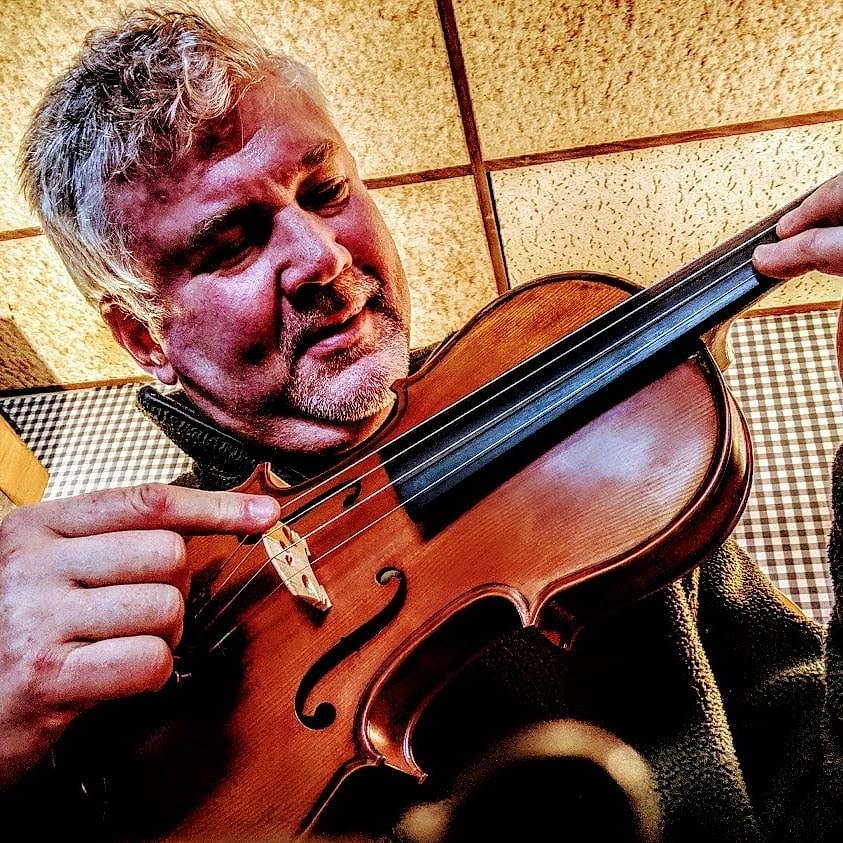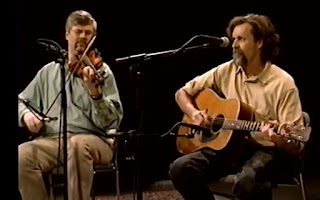
Bill Monroe and his Blue Grass Boys
Bill Monroe was a American musician and songwriter who is considered the father of bluegrass music. He was born in 1911 in Rosine, Kentucky, and began playing music at a young age. In the 1930s, Monroe formed a duo with his brother Charlie called the Monroe Brothers, and they began recording and performing together. The Monroe Brothers were very popular in the 1930s and 1940s, and they recorded a number of successful gospel and country songs.
Some of the Monroe Brothers' popular recordings include "What Would You Give (In Exchange for Your Soul?)," "The Little Glass of Wine," and "I'm Going to Make Heaven My Home."
After Charlie Monroe's death in 1940, Bill Monroe formed a new band called the Blue Grass Boys and began incorporating more blues and jazz elements into his music. He is credited with popularizing the term "bluegrass" and establishing the bluegrass genre, and he is considered one of the most influential musicians in American history. Monroe continued to record and perform until his death in 1996, and his contributions to bluegrass music have been recognized with numerous awards and accolades.
"Bluegrass" refers to a genre of American roots music that originated in the 1940s in the Appalachian region of the United States. It is characterized by the use of acoustic instruments, fast tempos, and the use of improvisation and "blue notes" (slightly flattened notes that give the music a distinctive sound).
The term "bluegrass" was coined by Bill Monroe, who is considered the father of bluegrass music. Monroe's band, the Blue Grass Boys, was named after his home state of Kentucky, which is known as the "Bluegrass State" due to the presence of bluegrass, a type of grass with blue-tinted blades. Monroe's band played a mix of old-timey music (a precursor to bluegrass) and blues, and the term "bluegrass" came to describe this unique blend of styles.
Old-timey music is a genre of American folk music that predates bluegrass. It is characterized by the use of traditional instruments such as the fiddle, banjo, and guitar, and often features call-and-response vocals. Old-timey music was popular in the southern and eastern United States in the late 19th and early 20th centuries, and it served as a major influence on the development of bluegrass.
Typical bluegrass instruments include the guitar, banjo, fiddle, mandolin, and double bass. Bluegrass musicians are known for their virtuosity and their ability to improvise and play solos.
Some famous bluegrass musicians include Bill Monroe, Earl Scruggs, Ralph Stanley, Flatt and Scruggs, Stuart Duncan and Alison Krauss.
What's the difference between Bluegrass and Celtic fiddle music?
Celtic fiddle music is a genre of folk music that originated in Ireland and Scotland, and it is characterized by its use of the fiddle and traditional dance rhythms. Bluegrass fiddle, on the other hand, is a style of playing the fiddle that developed in the United States, and it is an integral part of the bluegrass genre. Bluegrass fiddle is characterized by fast, complex playing that often involves improvisation and the use of "blue notes" (slightly flattened notes that give the music a distinctive sound).
Some famous bluegrass fiddlers include Vassar Clements, Bobby Hicks, and Jason Carter.
Some examples of bluegrass fiddle music include:
These songs are all examples of classic bluegrass tunes that feature fast, complex fiddle playing.
What is Newgrass and what is different about it?
Bluegrass is a genre of American roots music that originated in the 1940s in the Appalachian region of the United States. It is characterized by the use of acoustic instruments, fast tempos, and the use of improvisation and "blue notes" (slightly flattened notes that give the music a distinctive sound). Traditional bluegrass instruments include the guitar, banjo, fiddle, mandolin, and double bass, and the genre is known for its high level of musicianship and vocal harmonies. Newgrass is a subgenre of bluegrass that incorporates elements of jazz and other styles of music. It is characterized by the use of improvisation, complex melodies, and sophisticated chord structures, and it often features a more eclectic mix of instruments than traditional bluegrass.
Newgrass Revival 1987
Jazz has had a significant influence on newgrass music, and many newgrass musicians are trained in both jazz and bluegrass. Sam Bush is often credited as being the first bluegrass musician to blend jazz and bluegrass, and his band, the New Grass Revival, helped to popularize the newgrass style in the 1970s and 1980s. Other musicians who have contributed to the development of newgrass include
Darol Anger,
Bela Fleck,
Stuart Duncan,
David Grisman, and
Jerry Douglas.
Newgrass is characterized by the use of improvisation, complex melodies, and sophisticated chord structures, and it often features a more eclectic mix of instruments than traditional bluegrass. Newgrass musicians are known for their versatility and their ability to blend different styles of music.
In general, bluegrass is more traditional and roots-oriented, while newgrass is more experimental and innovative. However, there is a lot of overlap between the two genres, and many musicians play both traditional and newgrass music.
 Registration for online lessons is easy!
Registration for online lessons is easy!
































